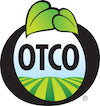Concentrated Animal Feeding Operation Vs. the Co-op: What's the Difference?
If you were raised in America, or most any other developed country, you most likely have seen a story about dairy farms that goes a little like this: A nice, somewhat weathered looking farmer rises at the crack of dawn. He quietly enters his barn where waking cows looking rested and happy greet him with a "moo." He pulls up a stool, sits next to the cow and begins to press by hand, squeezing out pure, fresh, healthy milk that will soon be bottled and delivered your local store.
With the media attention corporate agriculture food giants have garnered recently you probably know this simply isn't the case when it comes to the massive amounts of commercially produced dairy.
Concentrated Animal Feeding Operations (CAFOs) are now the norm when it comes to livestock production, be it dairy cows, animals raised for meat or egg production. There are no real farmers to speak of, but rather supervisors and handlers that survey the seas of fur and feathers, pulling out lame or dead animals, and making sure the rest find their way to the food troughs, or onto the trucks headed to the slaughterhouse.
The numbers are staggering: More than 10 billion animals (not including marine life) just on American soil, tucked away in unmarked buildings off of highways (where rolling hills and barns used to sit) optimized to maximize profits and decrease expenses. But the hidden costs include a rise in harmful genetically modified animal feed, excessive antibiotic use leading to antibiotic-resistant bacteria entering our food supply, growth hormones linked to human health issues, and subsidies that reward the animal hoarding industry and make it more difficult for the family farmer—the few who still do rise at the crack of dawn to head into the barn—to afford to keep the farm.
Except, that's not the whole story.
Enter the co-op. It's a term you've probably heard applied to a few different paradigms, from housing and shopping to banking; it's also a powerful tool in farming.
The most successful example of a farm co-op is probably Organic Valley, but there are many. (If you've ever shopped in a health food store, or purchased organic milk in your local supermarket, you may have seen the Organic Valley label.) The dairy cooperative works by uniting small farmers (much like the fictitious one mentioned above) and helping them to establish equity. Through a Board of Directors, the member farms have a voice in all aspects of governing the cooperative, which gives these small-scale farms some of the benefits of a big business while retaining all that's good in a small farm: Healthier food, cleaner air, water and soil, and perhaps most significantly, a farmer who can stay in business despite the cheaper products produced on CAFOs.
By working together, farmers create selling power (CROPP has more than 1500 farms in their co-op), able to meet the demands of the nation's largest supermarkets. And just like the nature of the co-op is to share equally and nurture the community, the end product—be it meat, dairy, spinach or celery—is typically of a higher quality as well.
Just like supporting your local produce farmers at farmers' markets, supporting small dairy and meat farmers is a key contribution to your local economy, your environment and your own health. Make sure you seek out organic when buying from co-ops, especially with dairy products so that you avoid the toxic antibiotics, hormones and other chemicals routinely fed to conventionally raised animals. And yes, you can even start reverting back to the pastoral image of a farmer truly communing with his cows.
Leave a comment
Comments will be approved before showing up.


